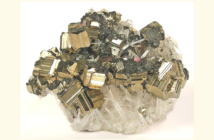Batteries are intended to give you the power required to run different devices, giving you the chance to carry your favorite devices with you. Today, consumers have an extensive variety of batteries to choose from, of which nickel cadmium batteries is one.
Basic Construction
Nickel-cadmium batteries are also called NiCad or rechargeable batteries. They are made of two plates of nickel oxy-hydroxide and cadmium which are leveled together and rolled in a cylindrical shape. The nickel oxy-hydroxide is the anode and the cadmium, the cathode. The electrolyte known as potassium hydroxide causes the build-up of an electrical charge between the anode and the cathode.
Types
- Sealed
- Vented

Application
- General: Toys, Electronic products like Discmans, portable radios, walkmans.
- Specialized: model airplanes, power tools, wireless phones, camera flashes and cordless power tools.
There are numerous devices which can utilize a nickel cadmium battery; alas, unlike other battery types, the nickel cadmium batteries are more costly.
Storage Recommendations
One can store a Nickel Cadmium battery in either a charged or discharged state. However, long-term storage can quicken battery discharge and lead to the deactivation of reactants. Despite the fact that the cells might be stored between -20°c and +45°c, high temperature can result in crumbling of the chemicals and it is better to keep the cells in a cool, non-corrosive, clean and dry environment. If the battery is kept ideal for a long time, it might need 2 or 3 deep discharge cycles to restore battery’s full capacity.
Related Articles:
How to Calculate Battery Capacity
Ernst Waldemar Jungner and his Portable Batteries



